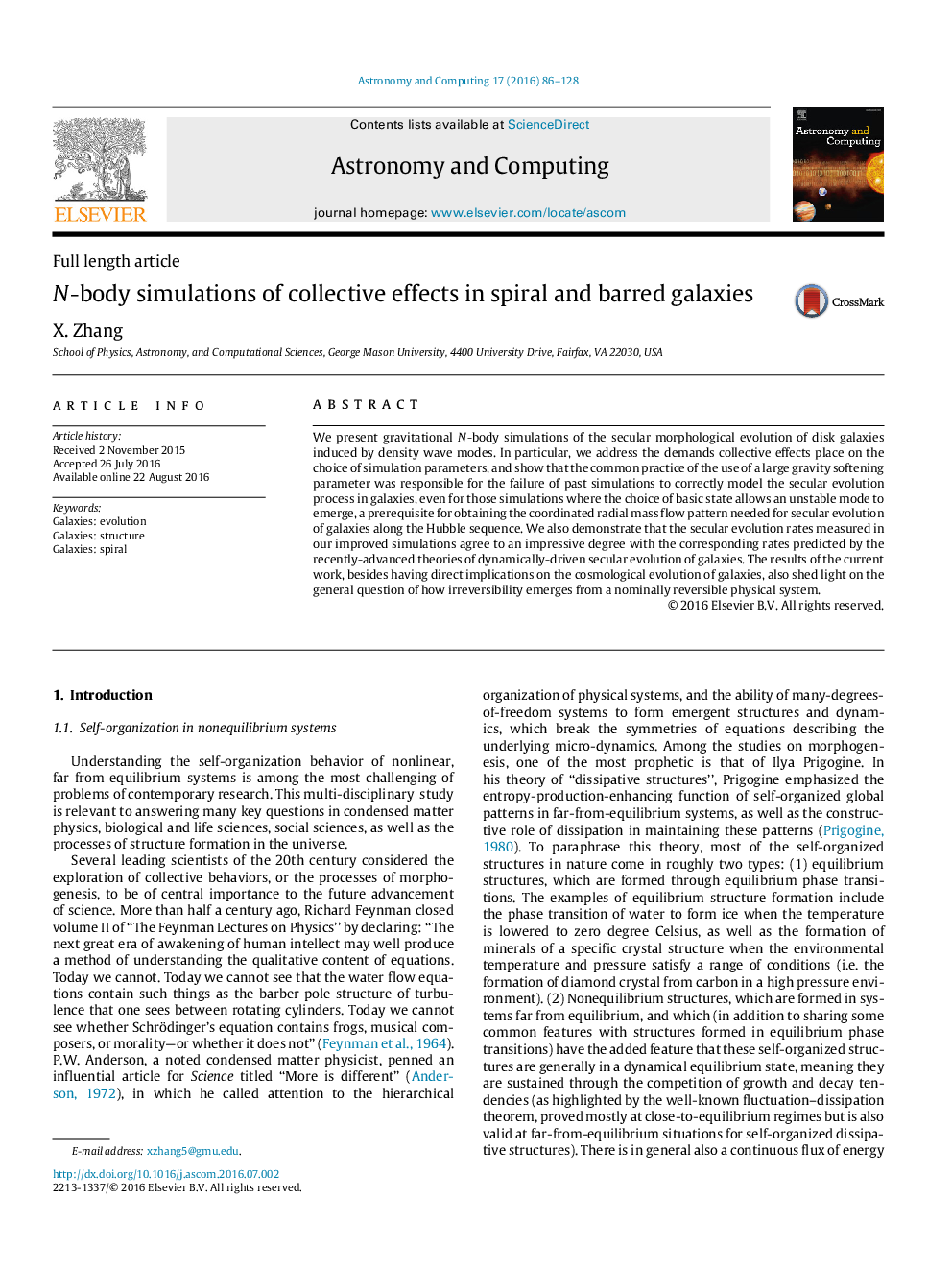| Article ID | Journal | Published Year | Pages | File Type |
|---|---|---|---|---|
| 6906077 | Astronomy and Computing | 2016 | 43 Pages |
Abstract
We present gravitational N-body simulations of the secular morphological evolution of disk galaxies induced by density wave modes. In particular, we address the demands collective effects place on the choice of simulation parameters, and show that the common practice of the use of a large gravity softening parameter was responsible for the failure of past simulations to correctly model the secular evolution process in galaxies, even for those simulations where the choice of basic state allows an unstable mode to emerge, a prerequisite for obtaining the coordinated radial mass flow pattern needed for secular evolution of galaxies along the Hubble sequence. We also demonstrate that the secular evolution rates measured in our improved simulations agree to an impressive degree with the corresponding rates predicted by the recently-advanced theories of dynamically-driven secular evolution of galaxies. The results of the current work, besides having direct implications on the cosmological evolution of galaxies, also shed light on the general question of how irreversibility emerges from a nominally reversible physical system.
Related Topics
Physical Sciences and Engineering
Computer Science
Computer Science Applications
Authors
X. Zhang,
